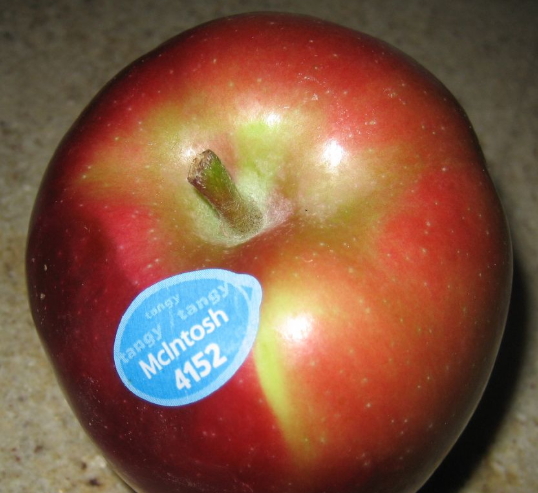
Using PLU and SKU Numbers
Managing your stock and inventory efficiently is crucial for retail. This is where PLU (price look-up) codes and SKU (stock-keeping unit) numbers come in. Implementing these tools can help streamline your operations, saving you time and money.
What Are PLU and SKU Numbers?
Before we dive into the benefits, let’s define what exactly PLU and SKU numbers are:
PLU codes are universal identifier numbers assigned to products, often produce items and other goods sold loose without barcodes. For example, a PLU code for a Granny Smith apple might be 4152. Suppliers assign these 4-5 digit codes and allow retailers to look at pricing and inventory data for produce.
Retailers can optionally use a range between 3170-3269 to create their own internal PLU codes for produce items. Please do not count on them being available, though. Many suppliers are idiots and will occasionally supply items with these PLUs. Interestingly, this happens in newsagencies despite standard stock file standard requirements explicitly forbidding this practice.
SKU numbers are unique ID codes that retailers assign to track stock-keeping units. They allow you to monitor specific product variants in your inventory. For example, say you assign:
SKU #101 to Coca-Cola Can 375mL
SKU #102 to Coca-Cola Bottle 1L
etc.
These 1-3 digit codes help differentiate product sizes, colours, flavours, etc.
Key Benefits of Using PLU and SKU Numbers
Implementing PLU codes and SKU numbers offers several advantages that can help streamline operations and boost efficiency:
Faster Checkout and Fewer Errors
PLU and SKU numbers speed up the checkout process by allowing cashiers to enter a code instead of searching through the system for the product. This is especially helpful for loose produce items that don’t have barcodes.
Fewer steps mean fewer opportunities for mistakes. Cashiers won’t have to guess which cucumber or apple variety they select. Quickly entering PLU and SKU codes results in faster customer service and shorter checkout lines.
Better Inventory Tracking
When each product variant has its unique SKU number, you gain much tighter control over inventory tracking. Your point-of-sale system can generate detailed reports by SKU showing exactly which items are in stock, which are selling fastest, and which need reordering.
This granular data makes it easier to minimize excess inventory and stock the right amount of each item. No more guessing how many of each t-shirt size or colour to order. The sales velocity by SKU tells you exactly what’s moving.
Increased Efficiency for Purchasing and Receiving
Standardizing your SKU system dramatically improves efficiency when purchasing inventory and receiving deliveries. Purchase orders, delivery paperwork, and item labels must only display the SKU to identify each product variant.
Employees will immediately know which item or size is being ordered or received by glancing at the SKU number, speeding up processing time considerably.
Improved Data and Analytics
With all inventory uniformly tracked and identified by SKU, your sales reports and analytics become much more helpful. POS reports can break down sales and profits by specific product variants rather than just lumping all similar items together.
You can see which SKUs have the highest profit margins, fastest inventory turns, or slowest sales velocity. This allows you to make smarter purchasing and promotion decisions. You can also identify underperforming items that may need to be discounted or discontinued.
Setting it up is very easy.
1: Open Stock Maintenance and look up the item.
2: Click on the "Prices" tab
3: Scroll to the far right on the pricing grid to see the "PLU" field.
4: Click EDIT and enter a number here (for example, 101 for an SKU and 4152 was the PLU for the apple above)
5: Click SAVE
When you are ringing up a sale in the cash register, enter the PLU into the "price entry" box and press ENTER, and our point of sale will find the item immediately!
PLU and SKU Best Practices
To maximize the benefits of using PLU codes and SKU numbers, keep these best practices in mind:
Keep SKU numbers short and straightforward - Long, complicated SKU codes lead to errors when entering the POS and paperwork. Stick to 1-3 digits if at all possible.
Be consistent—Decide on a standardized format for your SKU numbering and stick to it (e.g., category letter + sequence number). Please don’t make it overly complex. For example, we have a client that sells T-shirts and uses SKUs. They start with #1 for the small size of a V-neck T-shirt, SKU #2 for the medium, SKU #3 for the large, etc., to track each inventory item.
The main advantage of SKUs is that retailers can customize them for their needs. For example, they might encode specific attributes into each SKU.
For example, they started SKUs with a "B" for blue products, "R" for red products, or "S" for small, "M" for medium," and "L" for large. This can help employees quickly identify products.
Assign unique codes - Never reuse SKU numbers, even for discontinued items. Your retired products should still show their historical sales data.
Print SKUs on labels - Printing the SKU on product packaging, shelves, or item tags makes it fast and easy for cashiers to enter.
Cross-train staff - Don’t just train cashiers. Ensure everyone, from inventory managers to purchasers, knows how to use and apply SKUs.
Conclusion
As a retailer, implementing PLU codes and SKU numbers requires some initial work but pays off tremendously through savings in time and money. Your business will benefit from faster checkout, tighter inventory control, increased purchasing efficiency, and improved sales data.
Contact our team to learn more about setting up and using PLUs and SKUs in your retail operation. We would happily advise you on the best practices and system options to boost productivity. Investing in these simple tools will streamline your business for years.
FAQ
What is an SKU?
A stock-keeping unit (SKU) is an alphanumeric code created internally by retailers, manufacturers, or businesses to identify and track specific products in their inventor
SKU vs PLU
SKU (Stock Keeping Unit) and PLU (Price Look-Up) are inventory identification systems, but...
SKU (Stock Keeping Unit):
- Alphanumeric code assigned by retailers to track inventory
- Customizable and unique to each retailer
- Used for a wide range of products across various industries
- Provides detailed product information, including size, colour, and variations
- Primarily used for inventory management and sales tracking
PLU (Price Look-Up):
- Numeric code, typically 4-5 digits long
- Standardized across retailers
- Primarily used for fresh produce and bulk items
- Mainly used for pricing and essential identification
- Originated in the grocery industry to expedite the checkout process
Product Number vs SKU Number
Product Number (also known as Item Number or Part Number) and SKU Number have some key differences:
Product Number:
- Assigned by the manufacturer
- More stable and less subject to frequent changes
- Used for broader purposes like manufacturing and distribution
- May follow industry-standard formats
- Provides less granular information about the product
SKU Number:
- Assigned by the retailer
- It is more dynamic and can change over time
- Primarily used for internal inventory tracking and retail management
- Customized according to the retailer's needs
- Offers more detailed product information
PLU vs Barcode
PLU codes and barcodes are both used for product identification, but they differ in several ways
PLU:
- Numeric code, typically 4-5 digits
- Often used for fresh produce and bulk items
- Manually entered at checkout
- Standardized across retailers
- Limited data capacity
Barcode:
- Visual representation of data (usually UPC or EAN)
- Used for a wide range of packaged products
- Scanned at checkout
- It can contain more detailed product information
- Unique to each product and manufacturer
Can two items have the same SKU number?
It is not recommended that you give two items the same SKU number. Each SKU should be unique to avoid confusion during sales and restocking.
However, there are some scenarios where retailers might use the same SKU for closely related items:
- Different sizes or colours of the same product (using variations)
- When transitioning between suppliers for the same product
- For tracking the same product across different locations
The best practice is maintaining unique SKUs for each distinct product to ensure accurate tracking and avoid potential inventory management and sales process errors.


